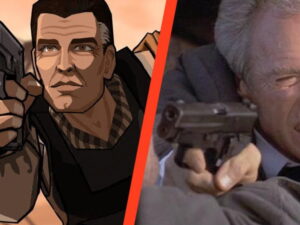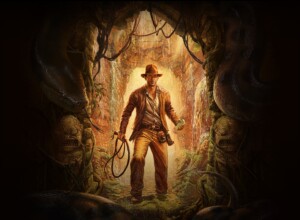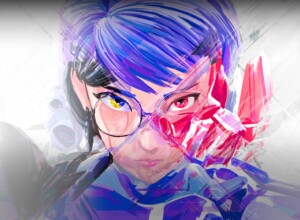Cut Scenes is Josh Wise’s regular column on the intersection between films and video games. This week, it’s Firewatch vs. Alfred Hitchcock’s Rear Window.
The dry rasp of cedar and spruce, baked in amber sunlight, as they shed their leaves; rock and earth stretching out like hot toffee in the dusty afternoon; blue nights lit with swirling eddies of flame. The Wyoming wilderness in Firewatch is one we touch from afar. In his seminal architecture book, Eyes of the Skin, Juhani Pallasmaa writes, “As we look, the eye touches, and before we even see an object, we have already touched it and judged its weight, temperature and surface texture.”
As such, the world of Firewatch is one at once tangible and distant – viewed from watchtowers, through binoculars, or a camera lens. Even when set free of these restraints, we are trapped in Henry’s body, our responses and choices limited to what he can express, our movements carried with his shambolic grace. The prickling sensation of confinement creeps in from the edges. Help, were we to need it, is a long way away.
It is in this sensation that Firewatch betrays its kinship to Alfred Hitchcock’s Rear Window. Confined to a wheelchair with a broken leg, L. B. Jefferies is trapped in his apartment. His softly obsessive mode of escape comes from the titular viewing portal. He finds himself drawn to the keyhole lives of the people in his block. This is at once clearly an autobiographical compulsion of Hitchcock’s, but so too is it a mirror for the audience: Jefferies is trapped in his chair, as we are, sinking into voyeurism, as we do.
Though not confined by choice, as Henry is, we wonder if Jefferies’s doesn’t relish the retreat into the imagined world of others. He Parries Lisa’s long-term planning in favour of movement and space, and though he bristles at the prospect of being contained in his apartment, he is soon unable to pull himself away from the window. Henry’s self-imposed exile entreats his imagination, which invites paranoia. You can’t help but wonder if He and Delilah’s worries don’t spring from the need of distraction.
There are no rapturous upheavals in Firewatch’s Wyoming, only simmering ripples in its fishpond smoothness. It’s mere suggestion, panic spurred on by the electric murmur of a generator on the wind, saturated by the absence of explanation. This creeping malaise is reflected in shifting hues.
Damp, cool greens and marble-white birch in calmer scenes give way to fiery-orange, ochre, and burning reds:
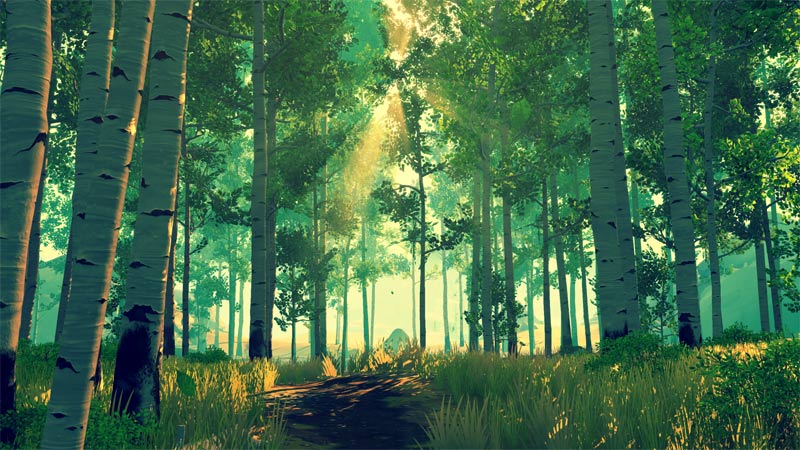
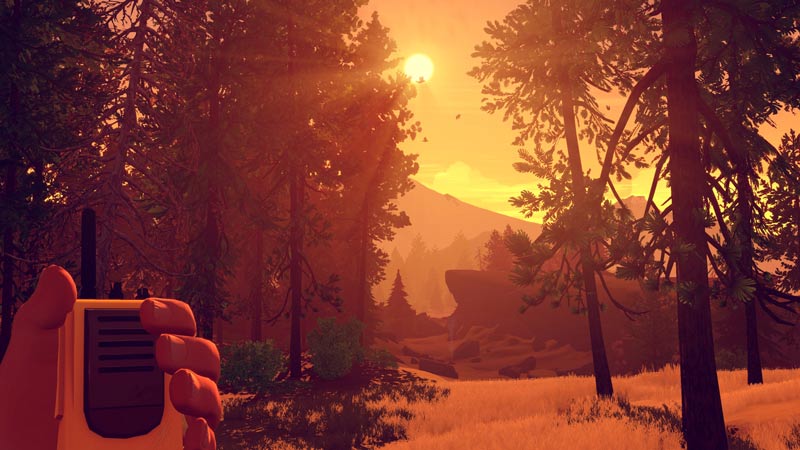
Hitchcock manipulates the colours of his shots, his use of saturation skewing the urban canvas lurid shades, as the affairs Jeffries spies appear more sordid:

Sometimes the skies are scorched in a similar way to Firewatch:

Another visual motif is the way that people are shown from distance, obscured or as silhouettes. Henry’s encounter with the girls down by the lake, and his night time stand-off with the mysterious figure are opaque silhouettes; they don’t feel real, just abstractions outside Henry’s inner-world.


Likewise, in Rear Window, Figures are viewed from far off in wide-shots, framed in doorways like miniatures in dollhouses, or sliced across by venetian blinds:

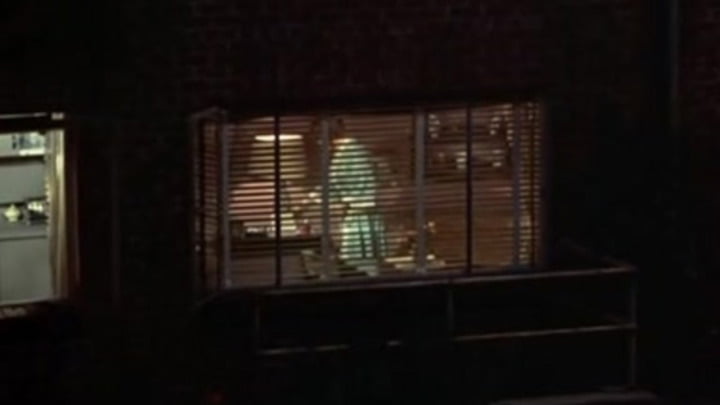
The way these figures are shown expose in Firewatch something that lurks at the dark heart of Rear Window. As Nietzsche warned, “If you gaze long into an abyss, the abyss also gazes into you.” These figures stared at by Jefferies through his telescopic lens are satellites, distant moons orbiting his reality.
It is toward the end, that they start to encroach dangerously upon his inner-reality; they start to stare back. In Firewatch, Henry gazes out for an entire summer hoping for something to stare back, but it is despite the distraction of paranoia, and the comfort of kinship, that he must return to his own abyss.




